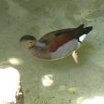-
Content Count
1,825 -
Joined
-
Last visited
Everything posted by WWKimba
-
For Cortland State/Ithaca College the fly is going to be the "Cortaca Jug" pattern. I have some ties here - back around 1959 the captains of both teams bought a jug in Homer, NY from Mr. Testa, a friend and neighbor of my Grandfathers. They agreed that this would be a trophy for the winning football team. It was painted blue, gold (Ithaca's colors) and red, white (Cortland's colors) and the Cortaca Jug rivalry was born. Last year this game was hosted by MetLife Stadium and a live crowd of over 53,000+ watched the game - setting a record for the largest crowd EVER to watch a game between 2 Div. III football teams. I grew up within walking distance of SUNY Cortland's practice fields and played many a football, baseball and softball games on their fields. I hope that you like my design.
Kim
BTW, this years' game will be on Nov. 12th at 1 PM kick-off in Yankee Stadium! Quite a rivalry. Go Red Dragons, beat the Bombers!!

